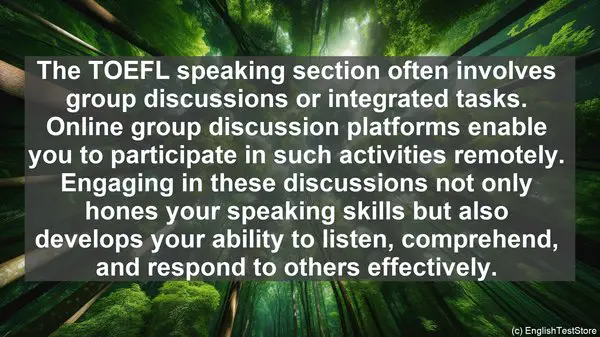Introduction: The Importance of TOEFL Speaking Practice
Welcome to today’s lesson. When it comes to the TOEFL exam, the speaking section can often be challenging. But with regular practice, you can improve your skills and boost your overall score. In this video, we’ll explore the top 10 online tools that can make your TOEFL speaking practice more effective and engaging. Let’s get started!
1. Mock Tests: Simulating the Real Exam Experience
One of the best ways to prepare for the TOEFL speaking section is by taking mock tests. These online tools provide you with a simulated exam environment, complete with time limits and prompts. By practicing under test-like conditions, you’ll become more familiar with the format and be better prepared for the actual exam.
2. Speaking Partners: Enhancing Fluency and Conversation Skills
Speaking with a partner is a great way to improve your fluency and conversation skills. Online platforms connect you with other TOEFL test-takers or English speakers, allowing you to have real-time conversations. You can discuss various topics, exchange ideas, and receive feedback, all from the comfort of your home.
3. Pronunciation Tools: Perfecting Your Accent and Intonation
Accurate pronunciation is crucial in the TOEFL speaking section. Pronunciation tools, such as interactive apps and websites, help you work on individual sounds, stress patterns, and intonation. Through practice and audio feedback, you’ll be able to refine your accent and deliver your responses more effectively.
4. Vocabulary Builders: Enriching Your Lexical Resources
A wide-ranging vocabulary is essential for expressing yourself clearly and precisely. Online vocabulary builders offer word lists, flashcards, and quizzes to expand your lexicon. Many of these tools are tailored specifically for the TOEFL exam, focusing on high-frequency words and academic vocabulary.

5. Time Management Apps: Mastering the Speaking Section’s Pace
In the TOEFL speaking section, time is of the essence. To ensure you complete each task within the given time frame, time management apps can be invaluable. These tools provide countdown timers and reminders, helping you practice pacing and avoid running out of time during the actual exam.
6. Feedback Platforms: Learning from Expert Evaluations
Getting feedback on your speaking performance is crucial for improvement. Online platforms allow you to submit your recorded responses, which are then evaluated by experienced TOEFL instructors. The detailed feedback you receive can highlight areas of strength and areas that need further work.

7. Group Discussions: Developing Critical Thinking and Listening Skills
The TOEFL speaking section often involves group discussions or integrated tasks. Online group discussion platforms enable you to participate in such activities remotely. Engaging in these discussions not only hones your speaking skills but also develops your ability to listen, comprehend, and respond to others effectively.
8. Topic Generators: Practicing Spontaneous Speaking
Coming up with ideas on the spot can be challenging. Topic generators, available as apps or websites, provide you with a range of prompts. By practicing speaking on these random topics, you’ll enhance your ability to think quickly, organize your thoughts, and deliver coherent responses.
9. Video Libraries: Analyzing and Learning from Model Responses
Watching and analyzing model responses is an effective learning strategy. Online video libraries feature a wide array of TOEFL speaking samples, including both high-scoring and average responses. By studying these examples, you’ll gain insights into the key elements of a strong TOEFL speaking performance.
10. Progress Trackers: Monitoring Your Improvement Over Time
Finally, it’s important to track your progress as you practice. Many online tools offer progress tracking features, allowing you to see how you’re performing over time. This not only motivates you but also helps you identify areas that require more attention and focus.


















